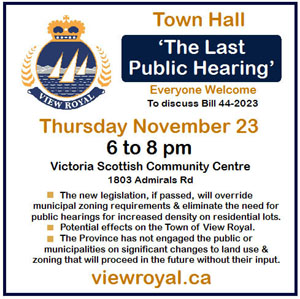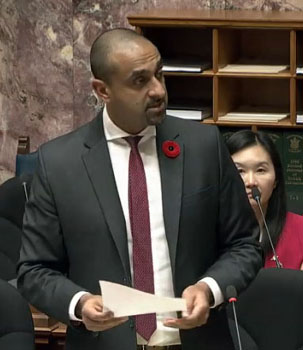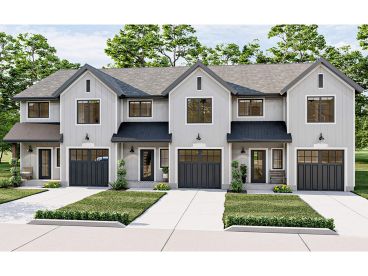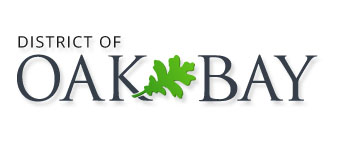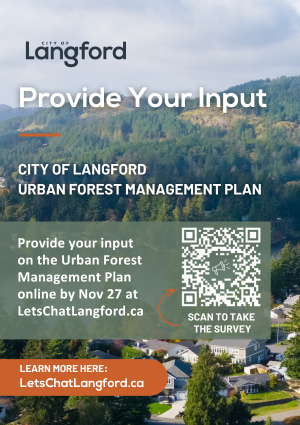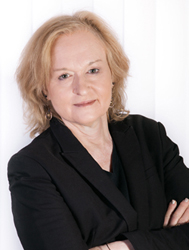Friday November 17, 2023 | VICTORIA, BC [Updated November 19, 2023]
Socioeconomic analysis by Mary P Brooke | Island Social Trends
New provincial housing legislation has the Town of View Royal and the District of Oak Bay up in arms.
View Royal had an immediate response to Bill 44-2023 that would override municipal zoning requirements and eliminate the need for public hearings for increased density on residential lots. Hence the name for the November 23 evening town hall: “The Last Public Hearing“.
Oak Bay’s mayor has issued an in-depth missive about the importance of full democracy at the local government level.
The BC Government says the new legislation, once passed, will streamline delivery of homes, services, and infrastructure.
In particular, Bill 44-2023 is part of a suite of housing legislation that is intended to urgently address the housing supply crisis. That will require local governments to shift their planning process to an up-front framework, pre-zone land to meet their housing needs, and reduce the use of current rezoning processes.
“It’s everyone’s responsibility to be part of the housing solution,” said Kahlon later on (November 19) in an interview with Island Social Trends. He says that small and medium-size density “is just that.” He articulated that “instead of people having one very large home it’s allowing people to break that home into smaller pieces so that more people can afford to live in the community”.
A shift in process:
Some municipalities see the new housing legislation as taking away a lot of power from locally-elected officials. Though it should be noted, that in the lingo of legislation, municipalities are “creatures of the province”. What the province can grant, the province can take away.
In the Greater Victoria area the new legislation (especially significantly reducing the direct input of municipal councils on zoning and housing types) seems to have notably inflamed View Royal and Oak Bay. Those are two geographically small municipalities with stable population growth and generally higher or more stable resident incomes, as well as distinct community character and lifestyles.
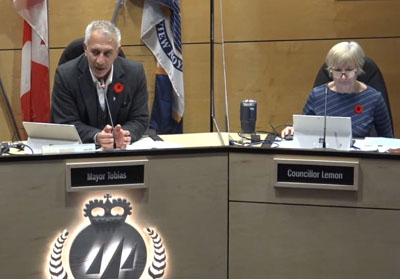
- View Royal was already promoting their town hall within hours of the legislation announcement including a letter by View Royal Mayor Sid Tobias to all fellow municipalities. Councillor Gery Lemon has expressed to Island Social Trends that “there was no consultation with municipalities and no opportunity for consultation with residents”. She says View Royal recognizes the need for more housing and that View Royal has already been “doing its bit”. View Royal council is concerned that “residents will no longer have a voice in shaping their neighbourhoods”, says Lemon. “The province didn’t engage with municipalities, it just happened… there was no opportunity for consultation with residents” especially around higher density (e.g. six-plexes can be built on single-family lots).
- Mayor of Oak Bay Kevin Murdoch has posted a lengthy video online in which he says that the demographic model of municipal decision-making is being threatened by the removal of opportunities for public hearings and the decision-making about zoning. He draws the parallel that countries like Ukraine are fighting for the right for full democracy and freedom, as did those who fought in WWII.
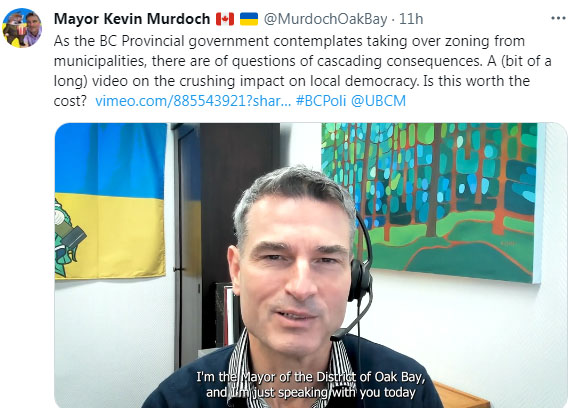
Desire for growth:
Meanwhile, the larger District of Saanich, for example, has embraced the opportunities to rapidly build more housing — with attention to types of housing. Saanich Mayor Dean Murdock seems fully on board with the housing supply expansion opportunities that will open up with the new provincial legislation.
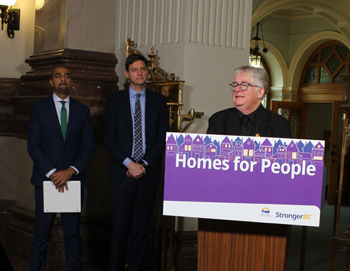
The City of Victoria has been clearly on board, in fact showing leadership in recent years by identifying ‘the missing middle’ and being open to higher density developments. Victoria Mayor Marianne Alto has been alongside the provincial government in their direction for increasing housing supply.

Western communities like the City of Langford and District of Sooke are open to more growth, as they have been for years.
Langford Mayor Scott Goodmanson is still taking his time to assess the impact for his town that has already embraced growth since 2008 (under the blessing of the Capital Regional District’s regional growth strategy). While that is a reasonable response given the amount of new information, it hasn’t put Langford in any high-profile position to inform local residents on where things might head in Langford.
Sooke just keeps on building, as they’re aware of the demand for people to find relatively affordable housing options within reach of the broader Greater Victoria area.
Importance of the Official Community Plan:
The overall direction of housing is intended to be formulated within each municipality’s Official Community Plan (OCP), said Housing Minister Ravi Kahlon last week. He encourages public participation at that stage of the municipal leadership process.
OCPs will now need to be renewed every five years. A lot can happen in a town in five years, especially with any shifts in composition of municipal councils.
Kahlon has also said that new standardized home designs will allow all home builders to take off-the-shelf designs in order to expedite home construction, as a way to speed up construction of new multiplex homes.
Housing supply crisis:
More housing supply is urgently needed in many BC communities. No municipal leaders are disputing that fact.
The BC government has identified 10 municipalities in BC, to start, for which specific housing build targets have been declared (based on a data model with a lot of factors like population demographics, land availability, and existing housing types); that list included three south Vancouver Island municipalities: Victoria, Oak Bay and Saanich. Another 10 municipalities are to be announced later this year or early in 2024, and 10 more after that.
The BC government has been addressing the housing supply shortage quite distinctly this fall, with five pieces of legislation that are aimed at boosting supply while being cognisant of the pieces that must fall into place along the way, such as infrastructure in support of increasing the local population in any given area.
New BC legislation will soon allow for the construction of multiplex (duplex, triplex, four-plex) buildings on lots that are/were zoned for single-family dwellings. This will change the landscape of towns and cities across the province, as the race to keep up with supply continues.
Yesterday the BC Housing ministry announced that pre-designed multiplex building plans will be available to developers and builders by summer 2024. This will help developers and builders reduce their architectural design costs, and speed up the start and momentum of housing projects.
The BC population increased by 250,000 in the last two years, with another 50,000 expected to wrap that up as a 300,000 three-year total.

View Royal has grown thoughtfully:
Over the years, the Town of View Royal has arguably been thoughtful and methodical about its housing growth and complexity. Among other things, they were the first municipality to not only legalize but to embrace secondary suites into the mix of housing options in their communities.
The entire footprint of View Royal is only 14.33 sq km. Tucked into a central location between the well-established Greater Victoria core area and the fast-growing expansive west shore region, the Town of View Royal is confined by major transportation arteries (e.g. TransCanada/Highway 1 and Island Highway/Hwy14) and is home to major socioeconomic infrastructure like the Victoria General Hospital.
As of 2021 there were 5,175 private dwellings. As of 2021, there were 11,575 residents in View Royal (up 11.2% in just five years) of which about 21% are older than age 65.
Oak Bay has grown cautiously:
Over the years, the District of Oak Bay has also been thoughtful and methodical about its housing growth and complexity. However, they are known for being an enclave of larger homes owned by people with established or stable wealth.
Where there are townhomes and apartments, those have been carefully carved into the ‘behind the Tweed curtain’ landscape. The recent approval of a six-plex in an old established area made news headlines.
The entire footprint of Oak Bay is 10.52 sq km. Tucked away at the southern tip of Vancouver Island, Oak Bay has developed its own unique enclave of a distinguished lifestyle.
As of 2021 there were 7,807 private dwellings in Oak Bay. There are 17,990 residents as of 2021 (down 0.6% in just five years) of which about 34% are older than age 65.
Robust development in the west shore:
By comparison, west shore communities — where housing growth has been targeted since the mid-2000s by the Capital Regional District Regional Growth Strategy, are likely to benefit by the new housing legislation changes.
Sooke: The timing of this legislation is good for Sooke, where at 2021 the population of 15,086 had grown at a rate of 4% in five years (compared to a 2.9% on average for the area). Population increases were 3.9% in 2019 and 2016, and 2.6% in 2020, according to stats from the District of Sooke. If all currently permitted housing is built as planned, the housing increase will be at a rate of 4.57% (higher than the greatest population growth year in the last decade), generating further availability of housing and rental options to the Sooke community.
Langford: Langford has embraced housing growth since 2008 including a strong commercial retail and service sector base. Though that hasn’t always addressed a full range of successes — notably at best a patchwork of greenspace and urban tree canopy. As well, the school capacity cannot keep up, so families are underserved in terms of the expectations they would have for attending local catchment-area schools. The Langford population increased by 31.8% in the 2016-2021 period, showing a Census population of 46,584 in 2021.
Colwood: Colwood is in many ways like ‘Oak Bay west’ with a single-family lot propensity. At first they showed a slower uptake on the CRD assignment that the western communities should undertake more housing development. Though they have caught up quite a bit in the last seven years with the sprawling Royal Bay development — population increased by 12.5% in the 2016-2021 period to 18,961 in 2021.
Metchosin: The rural District of Metchosin seems untouched by all this housing growth discussion. For decades their goal has been to keep their population under the 5,000 threshold.
RELATED ARTICLES BY ISLAND SOCIAL TRENDS:
- New housing legislation will support population growth in Sooke (November 17, 2023)
- Saanich is up to the task of building more homes quickly, says Mayor (Opinion-Editorial – November 13, 2023)
- Housing legislation takes affordability into account, says Minister Kahlon (November 10, 2023)
- Smart combo: more housing near transit hubs (November 8, 2023)
- Pushback on housing legislation over cost impacts, municipal load, development chill (debate by the Opposition, Nov 9, 2023)
- BC legislation to streamline delivery of homes, services, infrastructure (November 7, 2023)
- Hoped-for housing explosion based on multi-unit zoning (November 2, 2023)
- Clamping down on short-term rentals to free up housing stock (October 16, 2023)
- BC Legislature Fall 2023 session: housing, emergency management, crime, international credentialing, reconciliation (October 1, 2023)
- BC housing initiatives announced twice this week (September 29, 2023)
===== ABOUT THE WRITER:
Journalist, editor and publisher Mary P Brooke has been writing about Sooke and the west shore since 2008 within the context of Greater Victoria municipal politics and provincial impacts.
Her local news publications have been: MapleLine Magazine (2008-2010), the weekly print newspaper Sooke Voice News (2011-2013), the weekly print/PDF newspaper West Shore Voice News News (2014-2020), and now the full online Island Social Trends (2020 to present) at IslandSocialTrends.ca. The print publications from 2008 through 2020 are permanently archived at the Sooke Region Museum.
Ms Brooke takes a socioeconomic analysis approach to the news, as a service to readers to have more background on the things that impact our lives — whether that’s households, businesses, communities, organizations, industry sectors, or governments.
Mary P Brooke now reports with the BC Legislative Press Gallery. The print edition of Island Social Trends will launch in 2024.
Over the years, Mary has lived in Oak Bay, Fairfield, Sooke and now Langford where — in addition to her journalism projects — she engages with the community about urban food resilience. Mary is the mother of four now-grown children who have a range of exciting careers.
In 2023, Mary Brooke was nominated for a Jack Webster Foundation award called the Shelley Frailic Award which recognizes the commitment of a woman journalist who contributes to her community through journalism.




